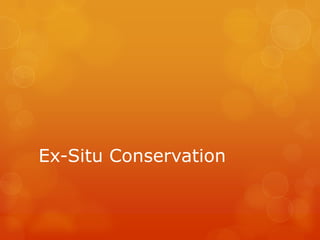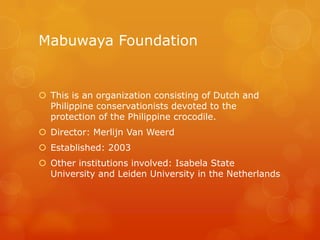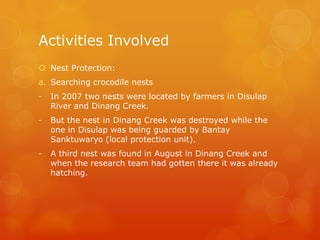The document discusses ex-situ conservation, which involves protecting endangered species outside of their natural habitats, such as in zoos, aquariums, and botanical gardens. It then focuses on efforts by the Mabuwaya Foundation and Isabela State University to conserve the critically endangered Philippine crocodile through a head-starting program. Young crocodiles are collected from the wild and raised in captivity to increase survival rates before being released back into the wild. Their program in San Mariano, Isabela involves nest protection, establishing rearing facilities, and community engagement and has resulted in the successful release of 50 head-started crocodiles back into the wild.


























